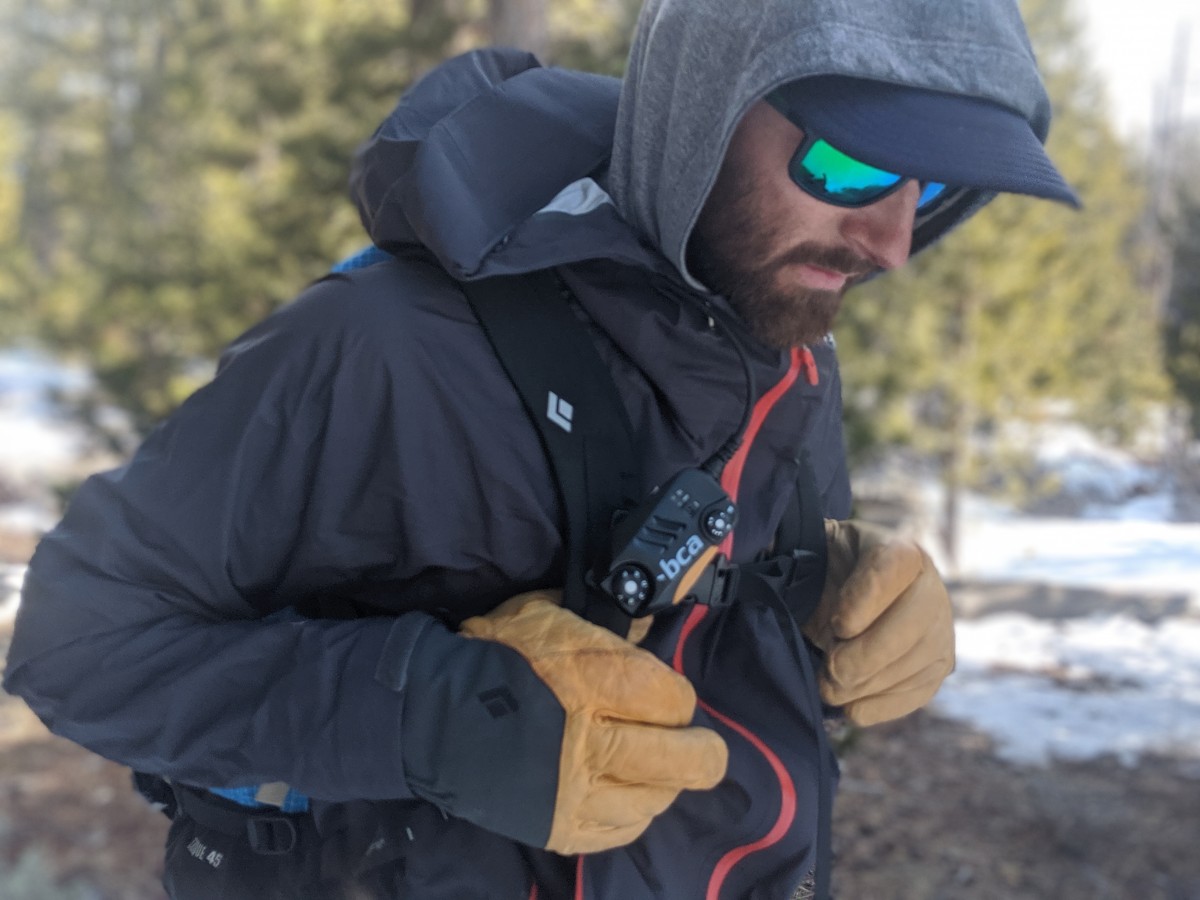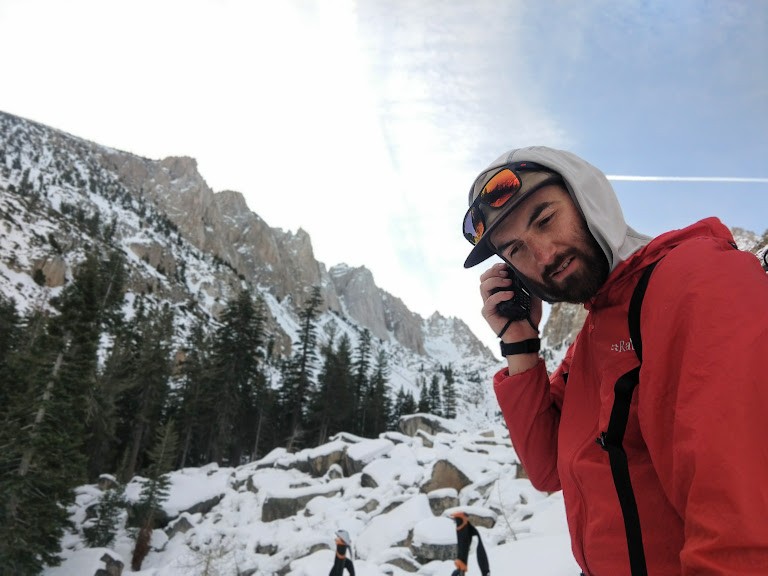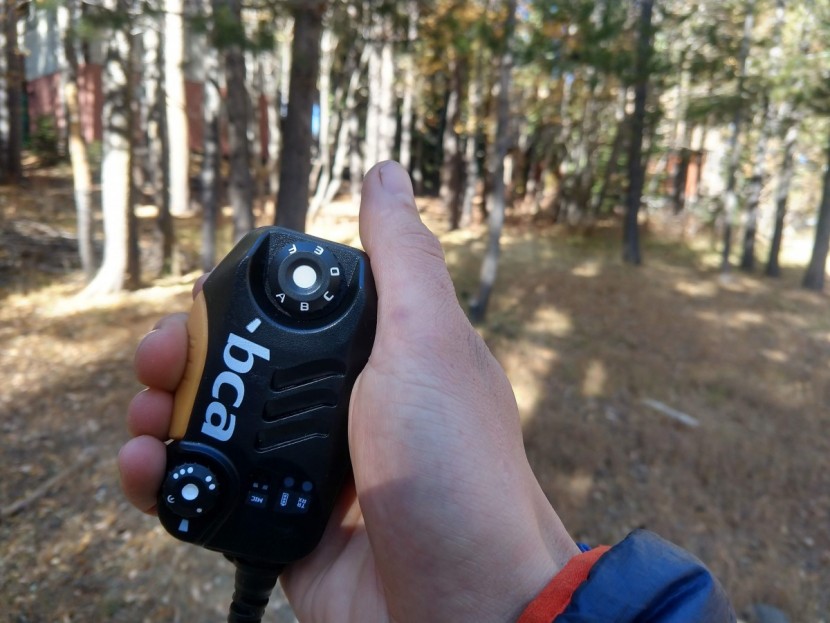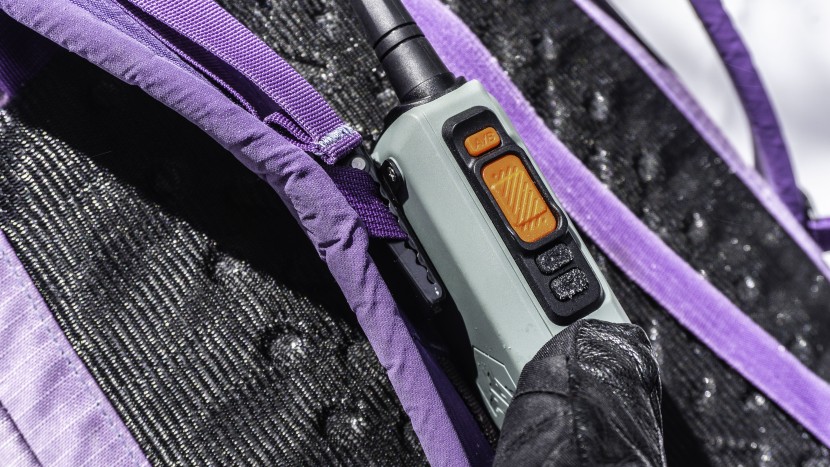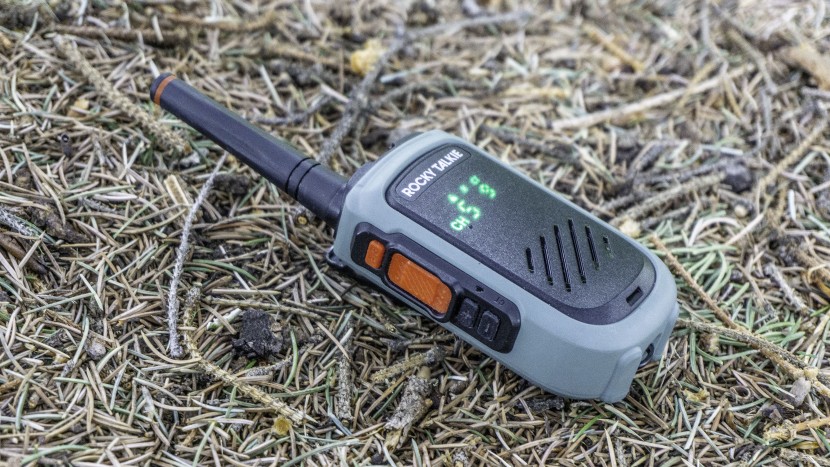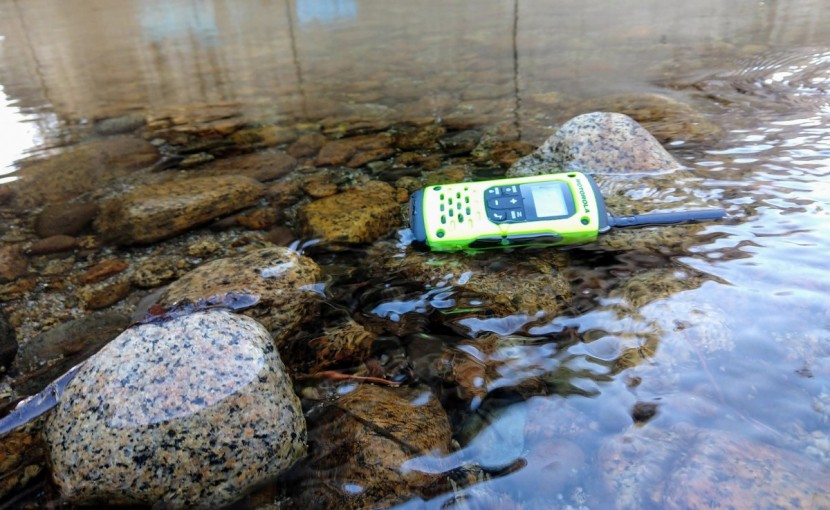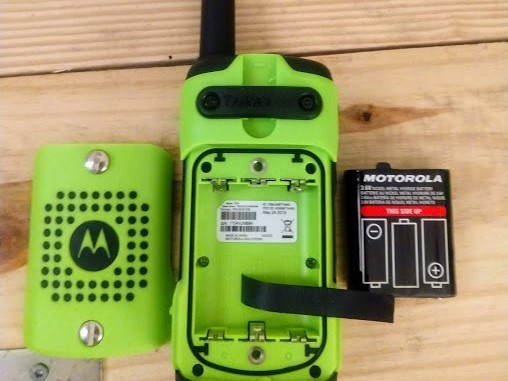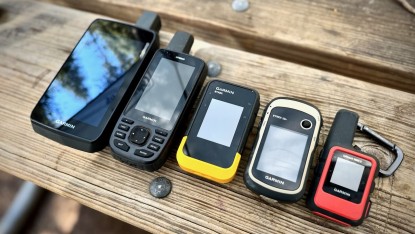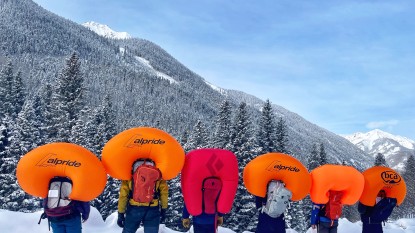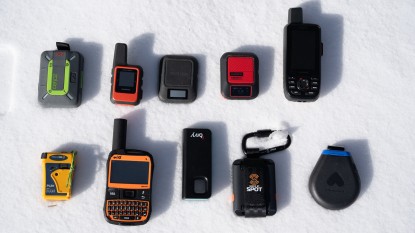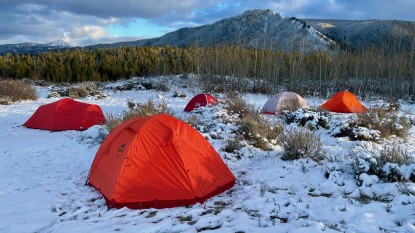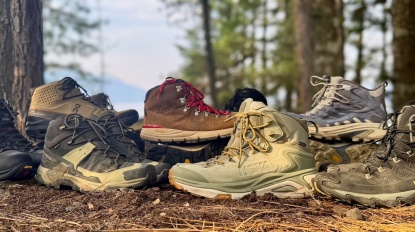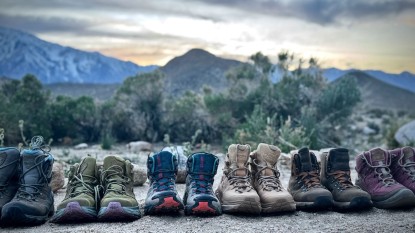Being able to communicate with your friends or family in the outdoors is absolutely crucial, whether you're enjoying a casual hike or a multi-day alpine climb. Sure, communication is easy as you follow each other up the trail at the same pace, but many situations dictate that separation is either a good idea or just happens naturally and that physical separation should not get in the way of good communication. This article will walk you through the decision-making process of choosing your first (or next) walkie talkie, which is also known as a two-way radio.
Do I Need a Two-Way Radio?
Have you ever gotten accidentally separated from your backcountry group? Have you ever lost visual contact from your backcountry partner and needed to communicate with them? Most of us have at some point, and really wished we had radios in those situations. Having a walkie talkie can be immensely helpful across virtually every outdoors sport, and the potential communication needs are limitless.
What Types of Radios Are There?
There are all sorts of radios out there - from basic ones for your kids to sneak around the backyard with to professional ones that sit in the vehicles of our emergency services personnel. Radios are regulated in the US by the Federal Communications Commission (FCC), which has a lot of rules on how radios are used. As you surf the World Wide Web, you'll find a dizzying array of radio-type explanations. Here, we'll break down the most important types of handheld radios you should be aware of before you start shopping.
Family Radio Service (FRS) Radios
For most outdoors enthusiasts, an FRS radio is your best option, given that they are simple and effective. These are the most common radios you'll find widely available at a store and DO NOT require a license from the FCC. You can take these out of the box, charge/insert the batteries, and go outside.
An FRS can have up to 2 watts of power, which is a primary indication of range, and 2 watts is plenty for most people who like to play outside. While the exact range of these radios depends on the transmission environment and the model, an FRS walkie can communicate over 30 miles in clear line-of-sight, and some can transmit up to 5 miles in hilly or mountainous areas. These radios will be channelized, and many FRS options boast over 100 privacy codes, so you don't end up getting as much chatter from other radios that aren't in your group. The bottom line is that these are very capable, lightweight walkies, and you don't have to grab an FCC license.
General Mobile Radio Service (GMRS) Radios
A GMRS radio, in some ways, is the higher-powered cousin of the FRS. While these can technically have up to 50 watts of power, most handheld GMRS options will offer around 5 watts, boasting extended range, particularly in hilly or mountainous areas. A GMRS radio can also access repeaters, which greatly extends its range, though repeaters aren't built everywhere you might want them. These do require a $35 license from the FCC, but it's good for ten years, doesn't have a test, and the license also includes your immediate family. These radios are generally channelized and can easily communicate with an FRS walkie.
We'd recommend these radios to more serious users who demand greater range and repeater access from their walkie talkie. These radios are typically heavier than FRS options, but they also come with more capabilities. If you do purchase one of these, please remember you DO need a license from the FCC, and if your friends use it, they technically need a license as well.
Amateur/HAM Radio
These are the most complex handheld radios you'll buy, but they offer incredible capabilities. You will need a $35 FCC license, but unlike the GMRS licensing process, you'll also need to take a test. There are six types of operator licenses available for Amateur radios, with the technician class being the most basic.
These radios typically boast the best range, regardless of the transmission environment, and can access a dramatically wider band of frequencies than FRS or GMRS. HAM radios aren't channelized, but you can program your radio. We would only recommend these to outdoor folks who are serious radio enthusiasts willing to go through FCC testing and licensing in the name of top-tier capabilities.
What Else Should I Consider?
Now that we've identified the main types of radio you should know about, here are aspects of each model you should investigate before purchasing.
Features
From simple to complex, there are walkie talkies available that span the spectrum. Depending on how and where you plan to use your radios, a feature-laden model might be exactly what you need, or more complicated than it should be.
Channels and Privacy Codes
Many FRS radios boast about how many channels they come programmed with. There are 22 FRS channels, but only channels 1-7 and 15-22 operate at 2 watts, and the rest are limited to 0.5 watts. The advantage of multiple channels is the ability to find a clear channel that doesn't have another party using it.
Privacy codes are another way to differentiate your radio traffic from other people, but they do not really make your radio traffic private. They add an inaudible addition to each transmission, and any radio on that channel and privacy code will only receive the message if it picks up that inaudible addition. So you can have multiple parties on the same channel, but you will only hear traffic from the ones that have the same privacy code set. Privacy codes do have a downside. Since you are still sharing the same channel, you may interfere with other people transmitting at the same time. You will not hear the other person talking because they are on a different privacy code, but both of your transmissions will sound garbled because only one person can transmit on any one channel at a time.
In busy areas, many channels and privacy codes are useful for cutting down on extraneous chatter. However, if you tend to play in more remote areas, you will not need to search to find a clear channel. We find that FRS 1 is commonly busy because it is the default on most radios, but we have been able to find silence on the other channels. We rarely had trouble finding clear channels during our testing in the mountains around Lake Tahoe, so more channels and privacy codes are nice but sometimes felt like unnecessary complexity.
Additional Features
VOX - Voice-operated exchange is a feature that allows the radio to transmit any time you talk without pressing the PTT button. We found this feature to be unreliable and sometimes annoying when it transmitted background sounds. We found that a well-placed PTT button on an external microphone was always more user-friendly than the VOX setting.
Weather Radio - Many radios have channels preset to receive the local NOAA weather stations in the US. This feature is quite useful, especially if you will be taking the radio on extended trips without other ways to check the weather.
Scanning & Monitoring - Some radios allow you to monitor multiple channels at once. This is useful in larger operations with multiple independent teams operating at once but is rarely relevant for the recreational user. Unless you are operating in a larger group, or just curious as to what people are saying around you, a lack of a scanning feature should not deter you from purchasing a radio. Some options also allow for scanning, where the radio scrolls through channels for activity.
Keypad Lock - For the vast majority of radios we have tested, the keypad lock works similarly. We do prefer models that have this feature (not all do, especially in low-priced models). The keypad lock usually only locks more advanced features but keeps the power button, volume, and PTT open. They all work about the same and have the same likelihood of having the lock button held down and unlocking inside a pack (it has happened to us, but it is unlikely) or having the volume turned down or inadvertent PTT button presses.
Durability and Waterproofing
This shouldn't come as a surprise, but when we take electronics into the field, we recommend the most durable options we can get. Even for the most careful users, the radio is bound to be dropped or smashed inside a backpack. While there is not a good universal assessment for durability, look for ones that don't have small plastic parts or protrusions and do have a good thick casing.
Waterproofing does have standards, and we really liked the radios that listed IP ratings. IP (Ingress Protection) ratings come from an independent organization called the International Electrotechnical Commission. Only a few of the radios we tested had an IP number, and those radios certainly were the most waterproof. An IP-rated product will have a label that lists IP followed by two numbers. The first digit represents dust protection on a scale of 0-6, and the second digit represents waterproofing on a scale of 0-9K. In both cases, a higher number represents better protection. Some manufacturers state that their radio is water-resistant, but an IP rating is a stamp of approval from an outside body that makes us much more confident in its actual protection from the elements.
Range
If you read the specifications of walkie talkies on the market, their manufacturer will claim range numbers somewhere near 30 miles or greater. This number is nowhere near what you can rely on in real life due to obstructions, weather, and electromagnetic interference. Actual numbers of the types of consumer radios we test and recommend to most users rarely break three miles in good conditions and even less with vegetation and topography in the way. This makes range an issue for many hikers, bikers, skiers, and ATV riders, where separating by a mile or more can happen pretty quickly. We don't recommend buying a radio with a power of less than 2 watts unless you need minimal range. Also, a longer antenna will stretch that range, so consider a balance between a small size and a larger antenna. If you need more than a few miles of range for your uses, consider a higher-powered GMRS or other option that you will need a license to operate.
Battery
Obviously, longer battery life is generally going to be better. Past that, there are some nuances that will make your battery more hassle-free. If the radio charges with a cord, that can save the trouble of always buying new alkaline AA or AAA batteries to replace the ones that died and will reduce the cost of the radio throughout its life. However, if it just charges with a cord, it means you may need to carry some sort of charging solution like a solar panel or a portable power bank on longer trips rather than just pocketing a few extra batteries. (Check out our top picks of solar power banks.) We really like interchangeable radios that have a rechargeable battery pack that can be replaced by normal alkaline batteries. That gives us the best of both worlds. However, most people bring a larger battery pack or a solar charger on trips these days for all of their electronics, so the radios that just recharge work great as well. Our least favorite options only used regular alkaline batteries because that can get expensive and feel wasteful.
Conclusion
Overall, the radio you are familiar with is the radio that you will use. If the interface or amount of features is difficult to navigate, you will likely shy away from using it to its full capacity. It is a good idea to have similar radios to your friends so you can help each other out and share radios in a group while being confident that all of them can communicate with each other. Have fun out there, and maintain communication.

